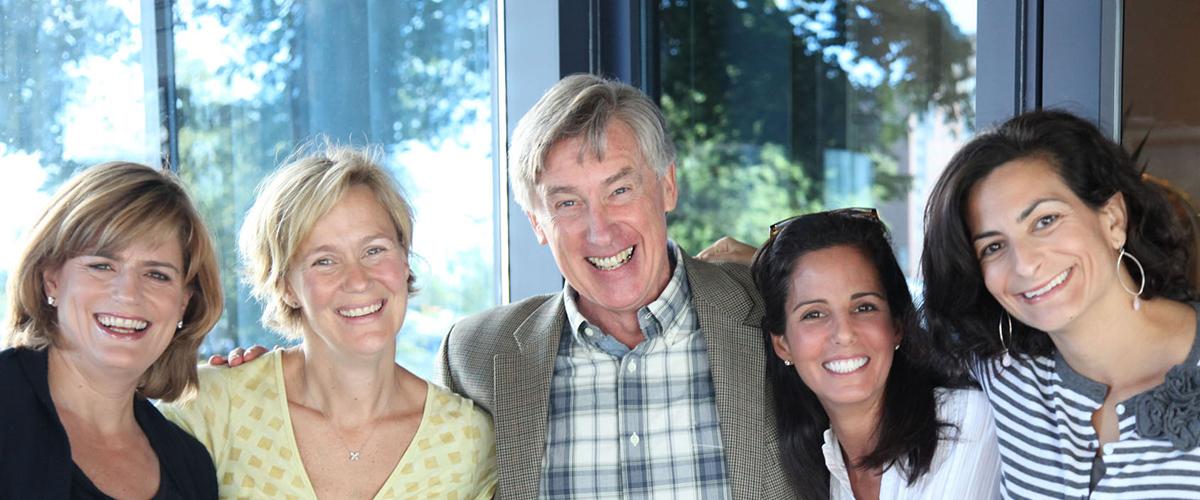As part of Myotonic Dystrophy Foundation’s (MDF) strategic accountability efforts, as directed by our current three-year Strategic Plan, an independent, comprehensive, and objective assessment of the myotonic dystrophy (DM) research landscape was conducted by Third Plateau, a social impact strategy firm hired by MDF.
The Myotonic Dystrophy Research Landscape Assessment, completed in the spring of 2023, was designed to broadly assess:
- Gaps and barriers to myotonic dystrophy (DM) research (both type 1 (DM1) and type 2 (DM2));
- Barriers to activating and maintaining high-functioning DM research sites and well-enrolled studies and trials; and
- How MDF might better support progress in the field.
Capturing broad perspectives from across the DM ecosystem, assessment results are based on feedback from 151 individuals across interviews, focus groups, and a comprehensive survey. Participants included industry (pharmaceutical and biotechnology) partners currently exploring DM therapies, as well as academic DM research labs and all-stage bench researchers.
Click here to download the full DM Research Landscape Assessment!
Strengths, Gaps & Opportunities
The assessment identified strengths, gaps, and opportunities in (1) research, (2) studies and trial readiness and (3) the areas of policy support, international support, transparency and data sharing.
- Research: DM Priorities, Barriers and Opportunities
- Across the field, there are gaps in the general understanding of the disease, particularly for DM2. Developing knowledge and a comprehensive understanding of disease mechanisms paralleling drug development was identified as the top priority for research and industry. Specifically, the identification of biomarkers as well as expanded genetic testing and diagnosis were identified as priorities for both groups.
- MDF must continue to play a key role in fueling DM research pipelines and supporting the next generation of researchers and clinicians. MDF’s fellowship and grant programs have substantially contributed to the development of a collaborative, strong, and committed cadre of DM researchers. Despite these achievements, the future talent pipeline for DM remains a key concern.
- Among researchers, the challenge of accessing funding for new research initiatives and the toll and resource drain of ongoing funding uncertainty together with time consuming grant seeking efforts - a common academic research problem - was also identified in DM research. Considering MDF’s credibility, opportunities of facilitating the seeding of new research and attracting larger institutional funders were identified. The opportunity to support early-stage research initiatives with pilot grants, as well as providing funding to bridge towards larger institutional funding opportunities was highlighted. Targeting such bridge funding mechanisms could broadly reduce barriers to launching new research programs and attracting talent and larger-scale funding.
- DM Research Studies and Trials: Strengths and Opportunities
- Over the past decade, there has been significant growth in the development of active DM programs, studies, and trials. However, the field has indicated that the Myotonic Dystrophy Clinical Research Network (DMCRN) and other active trial sites are not fully equipped to meet the near-term demand of the growth trajectory. The opportunity for investments in building the capacity of the DMCRN and/or other trial sites outside of the network was identified as critical.
- The concept of clinical trial readiness is critical to support accelerated drug discovery efforts. Considering current study enrollment difficulties in natural history studies and limited registry participation in light the relatively common population prevalence of DM suggests a more significant role of the registry supporting and mediating trial readiness.
- MDF is widely recognized and praised for its ability to bring together stakeholders across the DM ecosystem (patients and their families, physicians and specialists, researchers, industry partners) and its patient education programs. Respondents confirmed the importance for MDF to continue to invest in patient education programs, particularly related to upcoming and current trials, enrollment, and preparation for participating in trials and studies.
- Public Policy and Transparency Support Efforts, International Community Support and Efforts to Improve Knowledge Sharing between Academic and Industry Partners
- Industry partners and researchers highlighted MDF’s crucial role in advocating at the federal level with governing institutions, regulators, and policymakers, but expressed that a more clearly defined agenda and increased transparency around advocacy efforts may help to accelerate progress.
- While MDF has a global presence and many international partnerships, respondents suggested that MDF’s viewpoint is still U.S.-centric. Industry partners and researchers alike highlighted opportunity to better define the organization's international role and foster global collaboration to accelerate global learning and progress.
- While the DM research landscape is considered collaborative overall, there is an opportunity to improve knowledge and data sharing and access to data across the ecosystem, both among researchers and industry. MDF may have a role to play in promoting and ensuring accountability regarding data sharing, publication, and dissemination.
Click here to download the full DM Research Landscape Assessment!

